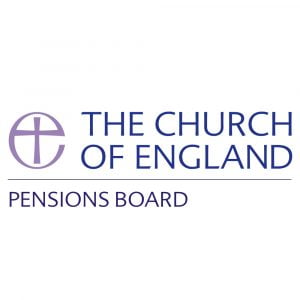
Church of England Pensions Board
Portfolio level
Portfolio level – Portfolio decarbonisation reference target
Baseline date: 31 December 2019
Baseline performance: 203.5 tC02e/$mn revenue
Target year(s): annual, 2025, 2040
Target(s): Year on year improvement (A), and TPI Carbon Performance criteria for Oil and Gas by 2023 (B).
- A. 7% year on year reduction in carbon emissions intensity (WACI), which equates to -35% by 2025, and -55% by 2040.
- B.TPI Carbon Performance of at least aligned with NDCs in Oil and Gas.
GHG scopes included: Scope 1 and 2 typically, but some analysis provided by TPI incorporates a ‘lifecycle emissions’ approach, which includes Scope 3. Inclusion depends on sector. Our approach will be guided by TPI’s evolving analysis.
Asset classes in scope:
- Listed equity (A and B)
- Corporate Fixed Income (B)
- Sovereign bonds: We are developing an assessment methodology for Sovereign Bonds (see ASCOR), in collaboration with BTPS and others, which will guide our stewardship of sovereign bond holdings.
- Real estate: Our real estate holdings are entirely managed indirectly via funds-of-funds, so outside the scope of the current NZIF.
Methodology: We have conducted climate assessment at the strategic asset allocation level (see IIGCC’s Portfolio Testing Report (March 2021)).
We support policy advocacy through IIGCC and other networks, and have prioritised market engagement, through founding and chairing the Transition Pathway Initiative, and collaborating with FTSE Russell to develop the FTSE TPI Climate Transition Index series, etc.
Net zero scenarios:
- A. Consistent with the European Technical Expert Group on Climate Change’s requirement to cut year on year carbon emissions by 7%.
- B. Transition Pathway Initiative, based on IEA Sectoral Decarbonisation.
Emissions metrics: The Board integrates TPI assessments (including carbon performance) as the primary tool/methodology to achieve our target. We do not just seek carbon intensity improvements, but intensity alignment: TPI carbon intensity assessments are benchmarked against IEA climate scenarios: Paris Agreement, Below 2D and 1.5 degree pathways, depending on the sector (See TPI methodology documents). IEA scenarios have absolute emissions elements, and derive sectoral emissions intensity budgets from this underlying link to the required global absolute emissions reductions. We make active ownership decisions based on company intensity pathways relative to these benchmarks, which thereby tie them to a global science based and sector specific decarbonisation model.
Portfolio level – Investment in climate solutions target
Qualitative goal: We commit to increasing investment in climate solutions, where possible
Baseline date: 31 December 2019
Baseline performance: 2.8% of public equity. (classified as “Environmental Impact” by MSCI)
Methodology: Our approach varies by asset class. In public equity we have selected (and helped to develop) a passive index that increases exposure to ‘green revenues’ (as defined by FTSE Russell) through a portfolio tilt.
In alternatives, our approach to manager selection considers the prospects for climate solutions to be incorporated into the investment strategy (and eventual portfolio).
Asset level
Asset level – Portfolio coverage target
Baseline date: 31 December 2019
Baseline performance: In our baseline year our carbon intensity and TPI carbon performance alignment were close to benchmark Target year(s): 2023 (see TPI target (B) above)
Target: 100% of our public equity mandates are subject to the following rule: “0” weight or exclude any company assessed by TPI that has a TPI carbon performance of “not aligned” with at least the national/Paris pledges, or “no or unsuitable disclosure”.
Asset classes in scope: Listed equity and corporate fixed income
Data sources: Transition Pathway Initiative assessment, MSCI, Eikon.
Asset level – Engagement threshold target
Baseline performance: 100%
Target: 100%
Due to our integration of TPI assessment throughout our stewardship approach, all public equity holdings face at least proxy voting, but also engagement and allocation decision making, based on climate characteristics.
Additional information
Methodology: Our net zero targets and approach to climate change as a pension fund reflect our policy ambition to be at the forefront of institutional investors’ approach to climate change. The Transition Pathway Initiative began publishing 1.5 degree alignment pathways in 2021, and these are incorporated into our stewardship. While our 2019 public equity portfolio had climate characteristics marginally worse than benchmark, we have achieved significant alignment, years ahead of our target portfolio alignment pathway. This has come primarily as a result of differentiating between companies based on publicly available climate assessments, a methodology we continue to support and Chair, and which enables stewardship and investment decision-making across the financial industry.
Further work: We are proactively working to establish a common framework to assess sovereign bonds (as co-Chair of the ASCOR project), we are broadening our Net Zero approach to Sovereign Debt in light of this, and to Real Estate (though this asset class is managed indirectly via a fund-of-funds and falls out of scope of NZIF).
Fossil fuel investment: We are members of the Powering Past Coal Alliance, and exclude investments in thermal coal (10% revenue threshold). We also exclude investments in tar sands (10% revenue threshold) and as described above, we exclude oil and gas companies not aligned to the transition (based on TPI assessment).
Operational emissions: Target: Net Zero by 2030
The Board’s stewardship reporting contains a more full account of our Net Zero approach and strategy: Stewardship Report; Climate Change Policy